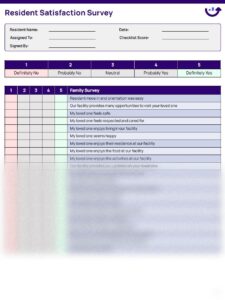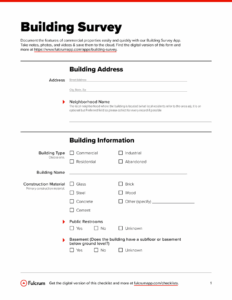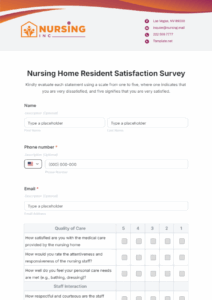Embarking on a journey to revitalize a community within a Promise Zone is an incredibly impactful endeavor. These designated areas, often facing persistent poverty and distress, are ripe for transformation through concentrated effort and strategic investment. But before any significant changes can be effectively implemented, understanding the intricate fabric of the community itself is paramount. This is where a comprehensive community assessment comes into play, serving as the foundational blueprint for all future initiatives.
A well-designed survey is the heartbeat of such an assessment, allowing residents to voice their perspectives, identify pressing needs, and highlight existing strengths that can be leveraged. It’s about listening directly to the people who call these neighborhoods home, ensuring that solutions are not just imposed, but are truly community-driven and reflective of lived experiences. Crafting the right survey, therefore, isn’t just an administrative task; it’s a crucial step in fostering trust, encouraging participation, and ultimately, building a more resilient and prosperous community from the ground up.
Understanding the Core of Promise Zones Community Engagement
The very essence of a Promise Zone designation lies in its holistic approach to community revitalization. It’s not just about addressing one single issue, but rather weaving together solutions across various sectors – economic development, education, housing, health, public safety, and infrastructure. To genuinely achieve this comprehensive transformation, a deep, nuanced understanding of the community’s current state, its challenges, and its untapped potential is non-negotiable. This is precisely what a robust community assessment survey aims to provide.
Such a survey acts as a powerful diagnostic tool, helping stakeholders move beyond assumptions and base their strategies on concrete data. It brings to light the specific nuances of a community, revealing where resources are most needed, what programs are effective, and what local assets can be strengthened. Without this granular insight, efforts might miss the mark, leading to inefficient use of funds and, more critically, failing to address the true root causes of distress. It ensures that interventions are tailored, relevant, and sustainable, rather than generic or one-size-fits-all.
Moreover, engaging residents through a survey builds a sense of ownership and partnership. When community members see their input being genuinely sought and utilized, it fosters trust in the revitalization process and encourages continued participation. This participatory approach is vital for the long-term success of any Promise Zone initiative, transforming residents from passive recipients of aid into active co-creators of their future. A robust promise zones community assessment survey template isn’t just a set of questions, but a strategic tool for empowerment and equitable resource allocation.
Key Areas to Cover in Your Survey
To capture the holistic nature of Promise Zone needs, a comprehensive survey should typically explore several interconnected domains.
- Economic Opportunity and Workforce Development: Understanding employment status, job skills, access to training, local business environment, and barriers to economic mobility.
- Education: Assessing school quality, access to early childhood education, adult literacy programs, and opportunities for higher education.
- Housing and Neighborhood Revitalization: Evaluating housing affordability, quality, blight reduction efforts, and perceptions of neighborhood safety and appeal.
- Health and Well-being: Gauging access to healthcare services, healthy food options, mental health resources, and overall community health concerns.
- Public Safety: Understanding perceptions of crime, interactions with law enforcement, and the effectiveness of safety initiatives.
- Community Connectedness and Social Capital: Exploring levels of community engagement, access to recreational facilities, civic participation, and neighborhood leadership.
Each of these areas provides a critical piece of the puzzle, painting a full picture of the community’s strengths, weaknesses, and aspirations. By gathering data across these diverse facets, organizations can develop integrated strategies that address the complex interplay of factors contributing to poverty and disadvantage within the Promise Zone.
Crafting an Effective Survey for Meaningful Insights
Developing a survey that truly elicits meaningful and actionable insights requires thoughtful consideration beyond just question selection. The language used, the format, and the distribution methods all play a critical role in its effectiveness. Firstly, questions must be clear, concise, and easy to understand, avoiding jargon or overly complex phrasing that might confuse respondents. Utilizing a mix of question types – multiple choice, Likert scales for agreement or satisfaction, and open-ended questions for qualitative feedback – can provide a richer dataset. Open-ended questions are particularly valuable as they allow residents to express nuances and concerns that pre-defined options might miss.
Consideration for survey accessibility is also paramount. While online surveys offer convenience, not all residents in Promise Zones may have reliable internet access or digital literacy. Therefore, a multi-modal approach, including paper surveys distributed at community centers, churches, or schools, and even facilitated group discussions or one-on-one interviews, can significantly increase participation rates and ensure a more representative sample. Offering the survey in multiple languages, if applicable to the community’s demographics, is another crucial step towards inclusivity.
Before launching the survey widely, conducting a pilot test with a small group of community members is highly advisable. This step helps identify any confusing questions, technical glitches, or areas where the language could be improved. Feedback from the pilot group can be invaluable in refining the survey instrument, ensuring it is user-friendly and captures the intended information effectively. This iterative process strengthens the survey’s validity and reliability, leading to more accurate and useful data.
Once the data is collected, the work of analysis begins. This isn’t just about tallying numbers; it’s about identifying patterns, correlations, and key themes that emerge from both quantitative and qualitative responses. The insights gleaned from the assessment should directly inform the development of specific, measurable, achievable, relevant, and time-bound (SMART) goals and programs. It’s about translating resident voices into actionable strategies that genuinely address their needs and leverage their strengths, fostering a truly transformative process within the Promise Zone.
The insights gained from a thorough community assessment are invaluable, providing a data-driven compass for all revitalization efforts. By deeply understanding the local context, challenges, and assets, stakeholders can allocate resources more effectively and design programs that truly resonate with the community’s needs. This focused approach ensures that every intervention is purposeful, contributing directly to the long-term well-being and prosperity of the residents.
Ultimately, empowering residents to shape their own future through active participation in the assessment process lays the groundwork for sustainable change. It cultivates a sense of shared responsibility and collective agency, turning aspirations into reality. This collaborative spirit is what truly drives the transformation, building stronger, more vibrant Promise Zone communities for generations to come.



